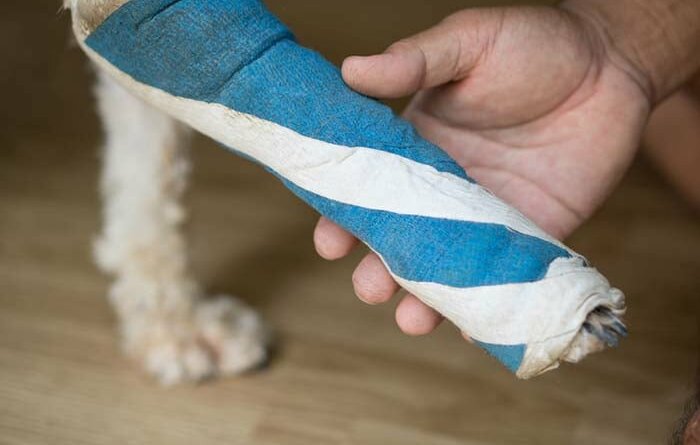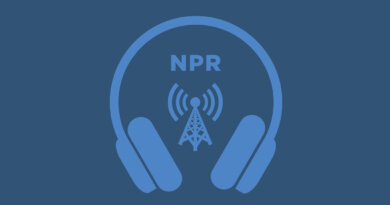What to Do If Your Dog Pulled a Muscle – Top Dog Tips
Dogs are highly active animals, and their skeleton and muscles are subject to considerable stress.
Not to be confused with a strain. A strain is a ligament injury.
Muscle injuries usually arise due to sudden movements, bad landings on their feet, falls, or chronic degenerative changes in the muscle itself.
Most commonly, however, it’ll be a pulled muscle.
This falls under the category of what is called a soft tissue injury.
The most common symptom of a dog muscle strain, bone, or joint injury is limping, which is usually, but not always, due to pain.
If you have noticed your dog has begun to limp, you should seek a veterinarian’s advice and ensure that the dog does not put pressure on the injured leg.
It is essential that the animal rests since every physical activity can transform a minor pain into a greater, chronic injury.
Injuries are common in dogs, but fortunately, muscles and bones can regenerate independently.
In this article, we will go over how to diagnose a dog’s pulled muscle, what treatment methods it needs to recover, and how to prevent it from happening again.
Symptoms and Diagnosing the Issue
Some of the symptoms that may occur when a dog pulled a muscle include pain, sensitivity, limited movement, cramps, stiffness and weakness of the muscle.
The widespread belief that muscle strains only occur when there is intense and strenuous physical exercise involved is wrong.
A dog can pull a muscle even during a light walk.
The affected muscle is slightly stiff but still flexible with moderate or mild muscle strains.
With more severe injuries, the pains are usually more extreme, which limits the range of muscle movements.
Finding the cause of the limping is often the real challenge.
A physical examination and an X-ray or magnetic resonance will help the vet to determine the actual state of things.
Treatment of a pulled muscle in the dog usually involves anti-inflammatory medication and pain relievers for alleviating pain and swelling. Surgery is often necessary in very severe cases.
Muscle injuries in dogs occur most often when the muscle is attached to the nerve fibers or in nerves that serve the muscles.
Stretching, tingling or tearing of muscle fibers is difficult to see, especially in dogs with thick hair.
After spreading the dog’s hair, you will notice a redness caused by muscle damage under the skin.
It is important to treat these injuries as soon as possible. If the damage is more serious, it takes at least three weeks of rest to heal fully.
Symptoms of mild muscle straining usually disappear by themselves after a week or two. In more severe cases, sometimes months are needed to restore the muscle to normal.
What to Do If Your Dog Pulled a Muscle
Pulled muscles are no fun for your dog or as an owner to see them limp around.
It’s best to see a veterinarian for a proper diagnosis to assess the severity of the injury.
However, there are a few things you can do yourself for your pup before or after a vet visit.
Make sure you get instructions from a veterinarian on how big of a problem your pup got himself into so as not to overdo with treatment.
First Aid Assistance
In most cases of pulled muscles in dogs, when the case isn’t severe and it’s just a simple injury due to playing too rough, the symptoms aren’t serious and it can be treated easily at home, and the animal should make a speedy recovery.
Make sure to have first aid kit for pets at home, which will include some of the tools as well as a manual on what to do.
Lots of Rest
Your pooch will need plenty of rest in order to heal, so avoid tiring the pulled muscle for a few days, especially if moving causes them severe pain.
However, too much rest causes muscle weakness and even muscle atrophy, which can prolong the recovery time or make the situation worse.
After two days, start moving the problematic muscle again by taking your dog for a short and easy walk, but be careful not to overdo it.
Place an Ice Pack on the Injured Area
Immediately after sustaining the injury, put an ice pack on the problem area. This will prevent swelling.
Make sure to not put the ice directly on the skin. Wrap the ice pack in a towel and then place it on the injured area.
A bag of frozen peas or anything similar that you have at home will do the trick as well. Your pet’s first aid kit will have a special one.
Keep your dog is calm and still.
The ice pack wrapped in the towel must stay on top of the pulled muscle for about 10-15 minutes.
In the first twenty-four hours after sustaining the injury, try to place the ice pack for 15 minute periods every 2 hours.
Bandage the Muscle
To reduce the swelling, if there is any, take an elastic bandage and wrap it around the dog’s leg.
Make sure not to tighten it too much so as not to stop the circulation. Again, this should be included in your pet first aid kit.
Other Things That Can Help
- Anti-inflammatory medication that your veterinarian can prescribe if the dog has a swelling of the injured muscle.
- Several days after the injury, start placing heating pads a couple of times a day. This will improve blood circulation in the injured muscle.
- Too much rest can be a bad thing because this leads to stiffness and weakness in the muscle. Start with short walks as soon as you notice that your pup is feeling better. Slowly and gradually increase their activity until the issue is resolved completely and the muscle has fully healed.
- Massaging the muscle can help with alleviating pain as well as help the muscle heal faster. There are many pet massage techniques you can utilize.
- Physical therapy has also been helpful for a muscle pull.
Nonsteroidal anti-inflammatory drugs
These can help and are a great option when nursing them back to health at home.
Depending on the severity, a vet will prescribe medication like NSAIDs to calm the pain and swelling.
For mild injuries, you can also give them natural supplements like turmeric.
How to Prevent Muscle Straining in Your Dog
Food.
Proper nutrition and supplementation play a vital role in the prevention of injuries such as this one.
If your dog doesn’t get enough essential nutrients such as amino acids from protein, there won’t be enough energy for muscle contractions which may lead to injury.
Supplements.
Essential supplementation, like giving your dog enough vitamins and minerals is also crucial to keeping the animal healthy and less prone to injury and prevent the onset of arthritis.
Most high quality dog foods will have a good balance of essential nutrients, but if you’re feeding your pup homemade food, you’ll need to include certain supplements.
If unsure sure which vitamins to give to your pet get advice from the vet or nutritionist.
Calorie restriction.
Overfeeding your dog to the point where there’s a risk of obesity is often the cause of a dog pulling a muscle.
On top of that, overweight dogs have weaker heart muscles, making it pump blood slower and affecting the liver and other organs.
Needless to say, injuries such as dog muscle strains are more likely to occur if the animal is overweight.
When the dog starts to run, or jumps off the couch, and the legs cannot sustain the weight of his body, it is quite easy for the animal to pull a muscle or a ligament.
Exercise.
A dog’s muscle is much like human’s, the more you train it, the stronger it gets.
So not having enough physical activity can also lead to injuries too.
Taking a dog for a daily walk is rarely enough.
Depending on the breed and lifestyle, some dogs require more strenuous exercise and playtime on a regular basis.
If your pet doesn’t get enough exercise and physical activity when he starts jumping around all of a sudden, it’s lhe willing to pull a muscle or otherwise hurt himself.
If you have noticed your dog is limping, and it doesn’t seem just a minor thing, you should consult a veterinarian.
If the diagnosis is a pulled muscle, there are steps you can take to help the animal recover faster.
After the recovery, maintain a healthy diet centered around dealing with inflammation and keep the dog active and healthy to prevent these injuries from happening again in the future.
READ NEXT: The Ultimate Guide on Pain Management for Dogs








